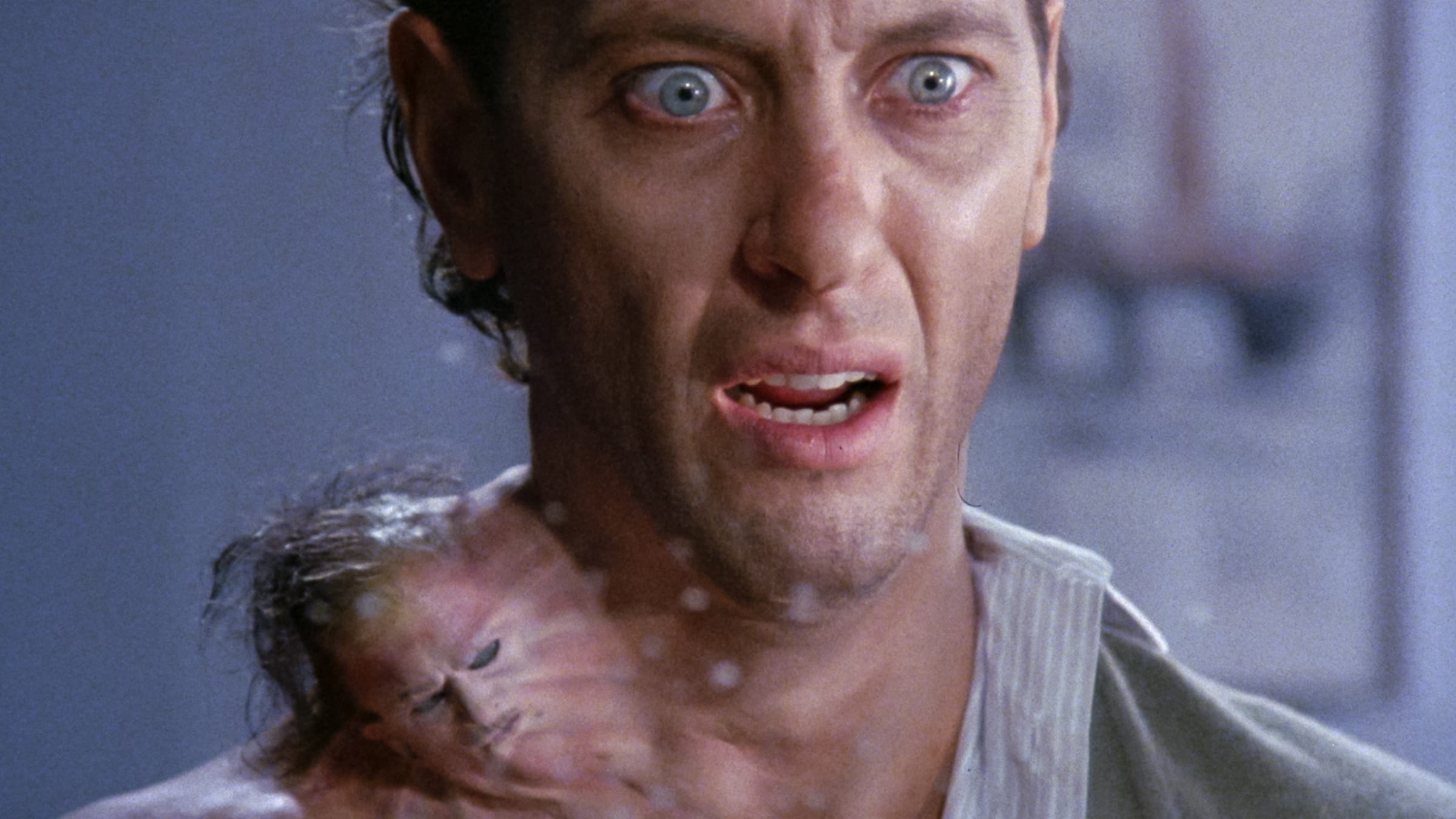RELATED ARTICLE
Withnail and I: What a Piece of Work
By David Cairns
The Criterion Collection

“I was just thinking about manic depression. It has to be admitted that it has certain symptoms—pathological lying, hysterical repetition, unnatural exhilaration—which, well . . . I was going to say they’re not unlike some features of the less reputable forms of advertising.”
Masque of a Savage Mandarin, Philip Bedford Robinson (no relation)
Just a few days into making Withnail and I (1987), writer-director Bruce Robinson told actor Richard E. Grant that he had another part for him: an adman who grows a talking boil. The project had originally been written as a novella (Withnail and I also began life as an unpublished book), which may seem like wasted effort, but it follows Graham Greene’s method of writing first as straight fiction and then as screenplay, for a more richly imagined world and characters.
Both Withnail and I and, ultimately, that boil film, How to Get Ahead in Advertising (1989), were produced by Handmade Films, a company set up by George Harrison to help the Monty Python team—whose work he adored—make Life of Brian (1979). American producer Denis O’Brien kept the business going for a while but was siphoning off so much money that he nearly bankrupted Harrison. (Imagine the level of fraud needed to make a Beatle go bust!) Before Handmade bled out in 1991, however, it made a lot of good films, Robinson’s two features preeminent among them.
Advertising—produced just before the axe fell, and slung into an indifferent market by a company one-lung-ing it into extinction (I had to travel from Edinburgh to London to even see it)—was practically designed to be ignored and undervalued. Withnail and I was just starting to gather a cult audience on home video—so Robinson was far from a household name—and with little advertising or distribution, the new film was nearly silenced, like a sentient boil with a mouthful of glue. And many of those who did see it were, to say the least, perplexed.
In fairness to critics and audiences, Robinson had given them a lot to process in this story of an advertising executive, Denis Bagley (Grant), creatively blocked on the campaign for a new skin-care product, who snaps and rejects the business he’s worked in for fifteen years—only for the business to strike back, erupting from his neck as a monstrous growth that starts speaking to him. In the annals of British film, Advertising has few antecedents, though Robinson’s mixture of vicious satire and body horror can perhaps be compared to Lindsay Anderson’s virtually career-ending Britannia Hospital (1982). While Britannia Hospital, released as the Falklands War triggered a repellent bout of jingoism, might have been the most despised British film since Michael Powell’s Peeping Tom (1960), Robinson’s lumpsploitation flick was sentenced to death by apathy.

